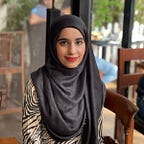Modest Fashion: An Accessory Pakistan Needs?
When Instagram influencers had not found their footing and the online space had not become woke, fashion was on a whole different level. Back then, fashion exuded a sensual, modern, explicit exclusivity that wasn’t accessible to all and neither a necessity for many.
Today, influencers have put fashion on a pedestal yet, made it more approachable. Fashion has branched out from being a classist idea and has become a need of any who desires it.
With this evolution, another segment emerged in the fashion space i.e. ‘modest fashion’. The category was recognized as many Hijabi and Muslim influencers started claiming the fashion and beauty space online. Brands were directed to think that there is a gap that should be filled. This led to many introducing modest clothing category for the Muslim clientele.
In Pakistan’s retail industry it is next to invisible but we cannot say the same for the social media landscape. So what value are influencers adding by identifying as modest fashion advocates?
Well, this is the interesting bit.
While Western hijabi bloggers became the driving force behind this change and inclusion, Pakistani influencers have played a different role. They are enhancing the style game with hijab tutorials. Others are normalizing fashion and hijab to the world. Hunaina Rasool, Tahleel Khan, Aiman Zaib Taboli (legit _hijabi), Alina Fahad (thatkarachigirl), Mariam Binte Younus (perksofbeingahijabi), Bihamaal Zurqa are some noteworthy Instagrammers to check out!
Influencers may have helped in identifying this industry but how have the industries adapted to this niche? This is what I am particularly interested in talking about.
‘Modest’ in fashion: normalizing or compartmentalizing?
The term modest fashion started catching on in the Western fashion scene in the mid-2000s. Brands started becoming penchants of inclusivity. Their product lines and generosity were well received at first as the concept was new. But as more and more brands hopped on the bandwagon, it seems the response has changed. A debate sparked on Twitter recently after Primark launched its modest line recently for the season. Many feel it is about time the term gets normalized.
Brands tapped into this segment as a means to profit off an additional USP. They marketed it under the guise of representation. However, what qualifies as modesty in today’s day and age is open to interpretation. The distinction is vague and sometimes misunderstood as well.
Emirati entrepreneur Rabia Zargarpur remains a staunch believer. In a recent interview with Salaam Gateway she shared, “it’s smart to keep that segment as a proper category. I love shopping at brands that address my needs for modest dressing and styling, and honestly, I don’t have the time to dig through hundreds of items or shop dozens of stores only to find the few pieces that may work for me, without layering it. I would rather select from different styles of modest wear in one segment of the store.”
Rabia has played a pivotal role in coining the term and expanding it to other markets including Pakistan. Though Rabia has a valid point, many now feel that the term further compartmentalizes the Muslim community. They fear modest fashion may further the wrong idea of oppression when it comes to Muslims covering up.
Modest Fashion and Pakistan
While the jury is still out on separating ‘halal-certified clothing’ from regular clothing in the West, it is interesting that Pakistan-with Muslim majority population- remains indifferent to the concept. Sure there are many abaya stores but hardly any recognition within the mainstream fashion paradigm.
At first glance, this may seem a bit odd given the need for women to dress modestly isn’t an alien concept here. Even so, the industry has never felt a need to create a segment pertaining to this idea exclusively.
Why so?
Simply because their needs are inclusive in the product lines many brands offer. Chances are you will find the same print and cut as sleeveless, three-quarter sleeves, and full sleeves kurta, on the same rack of some outlets like Generation. You can find loose-fitting shirts and trousers that do not show off your curves yet make you chic. There is no categorization. It is an unspoken understanding that in the face of it is quite liberating if you think about it!
Modest fashion is a rarely discussed issue in the Pakistani fashion climate. Should Pakistani designers invest in this tangent or remain oblivious to it as they have up until now? Let us know your take on the matter.
